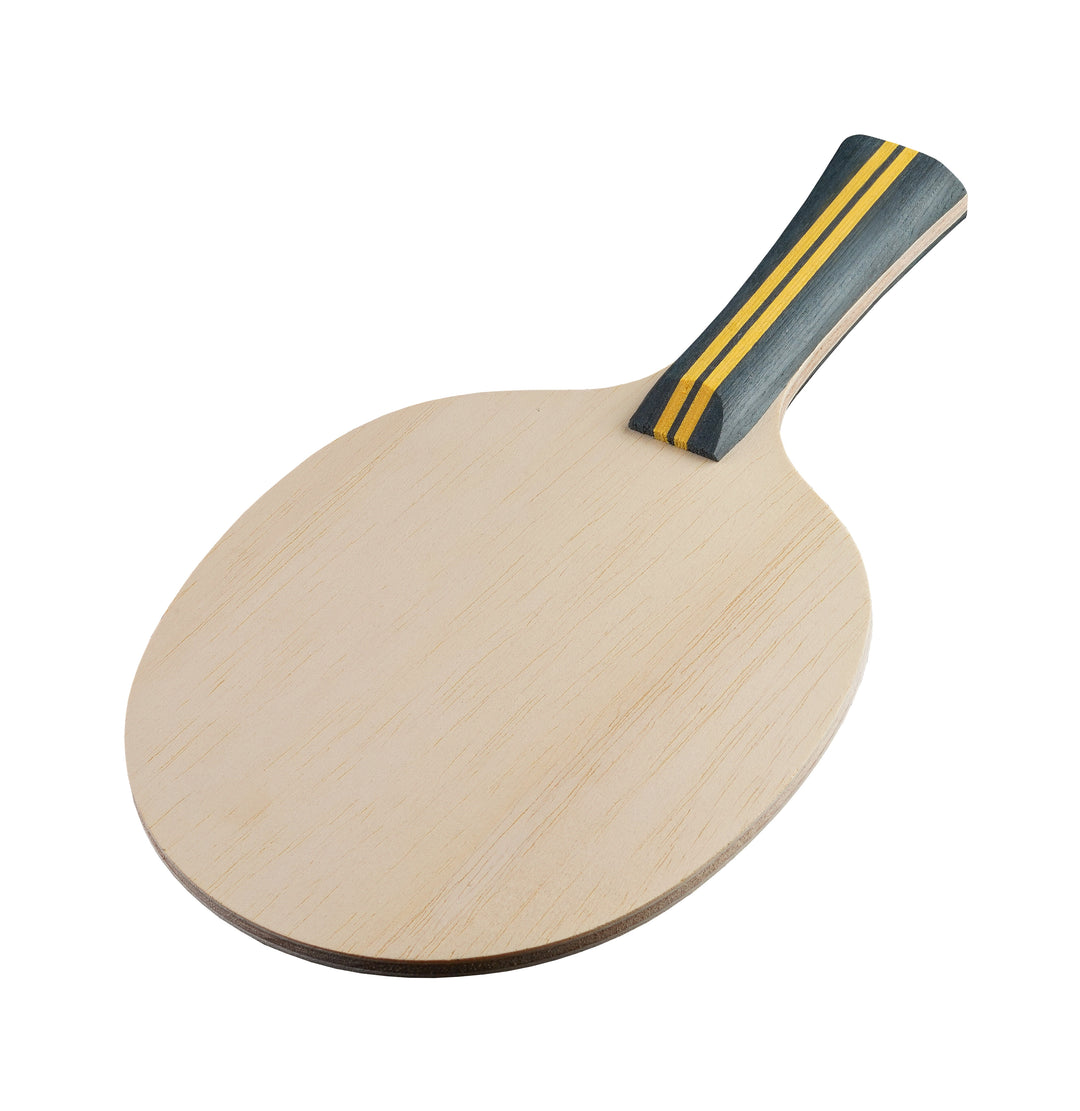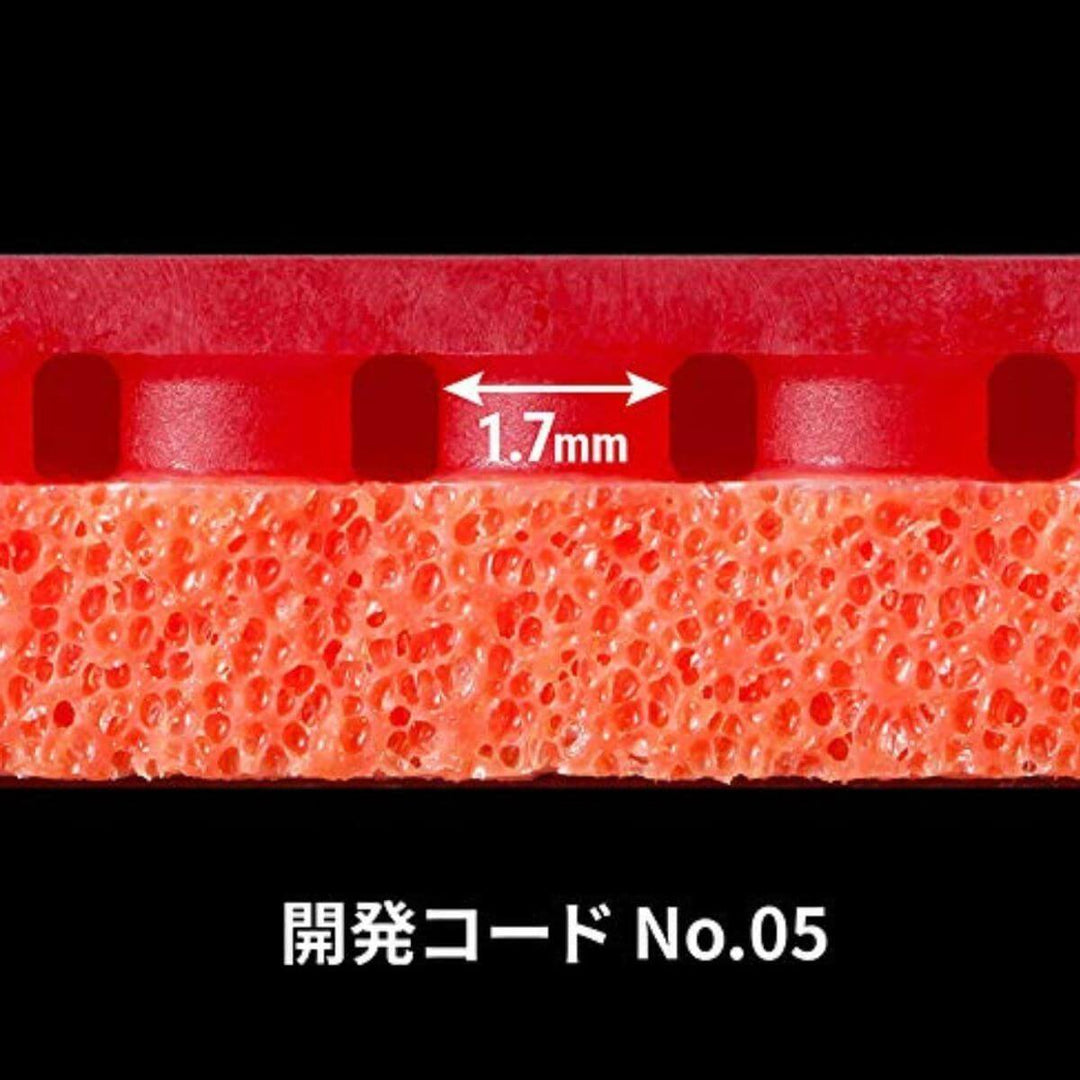How to Choose the Table Tennis Blade: A Comprehensive Guide

Choosing the right table tennis blade is a pivotal decision that can significantly impact your gameplay and overall performance. With a myriad of options available in the market, it's crucial to understand the intricacies of blade composition, playing styles, and personal preferences. This comprehensive guide will equip you with the knowledge and insights necessary to navigate the realm of table tennis blades and make an informed choice that aligns with your unique requirements.
Unraveling the Anatomy of a Table Tennis Blade
Before delving into the specifics of blade selection, it's essential to grasp the fundamental components that contribute to a blade's performance. A table tennis blade is a layered structure, typically comprising multiple plies or veneers of wood, often reinforced with composite materials like carbon fiber or fiberglass.
The Ply Count: 5-Ply vs. 7-Ply
One of the most significant determinants of a blade's characteristics is the number of plies or layers it possesses. The majority of table tennis blades are either 5-ply or 7-ply, each offering distinct advantages.
5-Ply Blades
5-ply blades are renowned for their exceptional control and spin generation capabilities. These blades feature a thicker core layer, sandwiched between inner and outer wood veneers. The thicker wood layers contribute to increased flexibility and a lighter overall feel, making them an ideal choice for players who prioritize precision and spin over raw power.
7-Ply Blades
In contrast, 7-ply blades are characterized by their increased stiffness and power potential. With more layers and thinner wood veneers, these blades offer a more rigid construction, allowing for greater ball acceleration and precision. While they may sacrifice some spin potential, 7-ply blades are often favored by offensive players seeking maximum speed and power.
The Significance of Wood Types
The type of wood used in a blade's construction plays a crucial role in determining its performance characteristics. Each wood variety possesses unique properties that contribute to the blade's overall feel, speed, and control.
Limba
Limba is a soft yet sturdy wood commonly used for outer veneers. It offers exceptional control and an improved touch, without compromising on speed. Blades featuring Limba veneers are often favored by players seeking a balanced combination of control and power.
Koto
Koto, a harder wood compared to Limba, is frequently employed in blades designed for topspin shots. Its sharper feel and increased stiffness make it an ideal choice for powerful, direct shots, catering to the needs of offensive players.
Ayous
Renowned for its softness and slow characteristics, Ayous is a popular choice for all-around blades. Its ability to absorb impact forces contributes to enhanced control and spin generation, making it a versatile option for players across various skill levels.
Hinoki
Hinoki is a versatile wood that can either be the sole material for penhold blades or a component in multi-ply shakehand blades. Its balanced stiffness and softness render a delightful tactile experience, appealing to players who value both control and spin potential.
The Role of Composite Materials
In addition to wood, many modern table tennis blades incorporate composite materials, such as carbon fiber or fiberglass, to enhance specific performance characteristics.
Carbon Fiber
Carbon fiber blades offer a significant increase in speed and stiffness, making them an excellent choice for offensive players seeking maximum power and precision. Different types of carbon fiber, such as Zylon Carbon Fiber or ALC (Aramid-Leinwand-Composite), are employed to achieve varying levels of rigidity and elasticity, catering to diverse playing styles.
Fiberglass
Fiberglass is another composite material used in blade construction. It contributes to increased speed while maintaining a lightweight quality, making it a popular choice for players who value agility and maneuverability.
Aligning Blade Selection with Playing Styles
Understanding your playing style is paramount when selecting a table tennis blade. Different blade compositions cater to distinct playing preferences, ranging from defensive to offensive approaches.
Defensive Blades
Defensive players, who prioritize control and the ability to disrupt their opponents with reverse spin, often gravitate towards blades that emphasize these characteristics. Defensive blades typically feature softer wood compositions, such as Ayous or Balsa, which excel at absorbing the ball's energy and facilitating a slower, more controlled game.
All-Around Blades
All-around blades strike a balance between speed and control, catering to players who employ a versatile mix of strategies. These blades offer a moderate level of power while maintaining a level of spin and precision suitable for various shot types, making them an excellent choice for players still honing their fundamental skills.
Offensive Blades
Offensive players, who thrive on power-hitting and topspin-heavy gameplay, require blades that can generate significant speed and precision. Offensive blades often incorporate stiffer wood compositions, such as Koto or carbon fiber reinforcements, to provide the necessary acceleration and direct ball contact for explosive shots.
Within the offensive category, blades can be further classified based on their speed and spin potential, ranging from Offensive- (moderate speed) to Offensive+ (maximum speed) variants.
Ergonomic Considerations: Handle Types and Grip Styles
Beyond the blade's composition, the handle type and grip style play a crucial role in ensuring a comfortable and effective playing experience.
Handle Types
Flared (Concave) Handle
Flared handles widen towards the bottom, offering a secure grip and reducing the likelihood of slippage. These handles are commonly preferred by shakehand grip players who require a stable grip during powerful forehand swings.
Straight Handle
Straight handles maintain a consistent width throughout, making it easier to transition between different shot types, such as forehand, backhand, and short game. These handles are favored by players who frequently adjust their grip for various strokes.
Anatomic Handle
Anatomic handles are designed to mold to the shape of the hand, providing enhanced comfort and ergonomics. While less common, these handles can be a viable option for players seeking a snug and natural grip.
Penhold Handle
Penhold handles are short and rounded, specifically designed for the penhold grip style. These handles cater primarily to forehand-oriented play but also accommodate the reverse penhold backhand technique, a modern adaptation.
Grip Styles
The choice of grip style, whether shakehand or penhold, is a personal preference that should align with your natural inclinations and playing style. Shakehand grips are more common among Western players, while penhold grips are prevalent in Asian regions.
Balancing Speed, Spin, and Control: The Eternal Pursuit
Achieving the optimal balance between speed, spin, and control is a constant pursuit in the world of table tennis. Manufacturers often face challenges when enhancing one attribute, as it can inadvertently impact the other two.
Speed
Faster blades often compromise control and spin potential. A blade's speed is influenced by factors such as the type of wood or composite material used, the number of plies, and the overall thickness. Players with advanced techniques and faster arm movements may prefer swifter blades to maximize their power.
Spin
Spin-heavy blades allow players to generate more revolutions on the ball, offering increased curve and dip in shots. The rubber's tackiness and the blade's flexibility play a significant role in spin production. Offensive players often prioritize spin to disrupt their opponents' timing and control.
Control
Control refers to a player's ability to place the ball accurately and with precision. All-around blades are generally designed to prioritize control over speed and spin, making them an ideal choice for new and intermediate players who are still mastering their strokes and shot placement.
Pricing Considerations: Finding the Sweet Spot
While the price of equipment can reflect its quality, it's also tied to a player's skill level and budget. As a general guideline:
Beginners
Beginners should avoid heavily investing in high-end equipment while still learning the fundamentals. Blades and pre-assembled rackets around $50, especially those made in China, can be a suitable starting point.
Intermediate to Advanced Players
For players with more refined skills and a clear understanding of their game style, investing in equipment ranging from $100 to $150 is recommended. This price range often offers a good balance of quality and performance.
Competitive Players
Those playing at a high competitive level might opt for top-tier equipment starting at $250. These rackets often feature unique features tailored for professional play and cutting-edge technologies.
Brand Reputation: Trusted Names in the Industry
Several brands dominate the table tennis market, each with its unique strengths and specialties.
Butterfly
A leading brand in the industry, Butterfly is renowned for its high-quality blades and rubbers, such as the Butterfly Viscaria and Timo Boll Spirit. While often on the pricier side, Butterfly equipment is trusted by professionals and enthusiasts alike.
Emerging and Established Brands
Companies like Xiom, Andro, Stiga, Nittaku, DHS, Yasaka, and JOOLA offer competitive products, often at a more affordable range than Butterfly. For instance, Stiga is renowned for its all-wood blades like the Offensive Classic and Clipper Wood, catering to players seeking a classic feel.
Customization and Personalization
While technical specifications and brand reputation are essential, players should prioritize personal comfort and playing style when choosing equipment. Trying out different blades and rubbers, seeking advice from coaches or advanced players, and experimenting with various combinations can guide you toward making an informed decision that aligns with your unique preferences.
Understanding Your Play Style: A Key to Success
Before investing in a table tennis blade, it's crucial to have a clear understanding of your playing style and the shots or strokes you frequently employ. This knowledge will ensure that you invest in the right blade that complements your strengths and supports your development.
Blade Types and Playing Styles
- All-around Blades: Ideal for beginners to intermediate players, offering maximum control and spin generation.
- Offensive Minus to Offensive Blades: Suited for players with a higher skill level, providing a balance of speed and control.
- Offensive Plus Blades: Recommended for players with well-developed basic strokes, prioritizing maximum speed and power.
- Defensive Blades: Best suited for defensive players using long pimples or unconventional rubbers, excelling in control and disruption.
Knowing your game and focusing on the shots or strokes you frequently use will guide you in selecting the appropriate blade for your playing style.
Caring for Your Table Tennis Blade: Maintenance and Replacement
Proper maintenance and timely replacement of your table tennis blade and rubbers can significantly extend their lifespan and ensure optimal performance.
Maintenance
- Use a quality table tennis racket case, preferably padded, for protection during transportation and storage.
- Employ film protectors to keep the rubber surface free from dust and debris.
- Store rackets in cool, dry places to prevent warping or deformation.
- Clean rubbers after each use and ensure they are dry before using a film protector.
Replacement Considerations
- Blades can last for decades unless they sustain significant damage or warping.
- Rubbers, on the other hand, have a shorter lifespan and may require replacement every 3-4 months for regular players or monthly for competitive players, depending on the frequency and intensity of play.
Regularly inspecting your equipment and addressing any signs of wear or performance degradation will help you maintain a competitive edge and prolong the life of your table tennis gear.
Conclusion: Embrace the Journey of Blade Selection
Choosing the right table tennis blade is a journey that requires patience, knowledge, and a willingness to explore. By understanding the intricacies of blade composition, playing styles, and personal preferences, you can make an informed decision that elevates your game and enhances your overall enjoyment of the sport.
Remember, while technical specifications and brand reputations are important, the true key to success lies in finding a blade that resonates with your unique playing style and allows you to unleash your full potential on the table.
Embrace the process of blade selection, seek guidance from experienced players and coaches, and don't be afraid to experiment. The right blade can be a game-changer, propelling you towards new heights and unlocking a world of exciting possibilities in table tennis.






